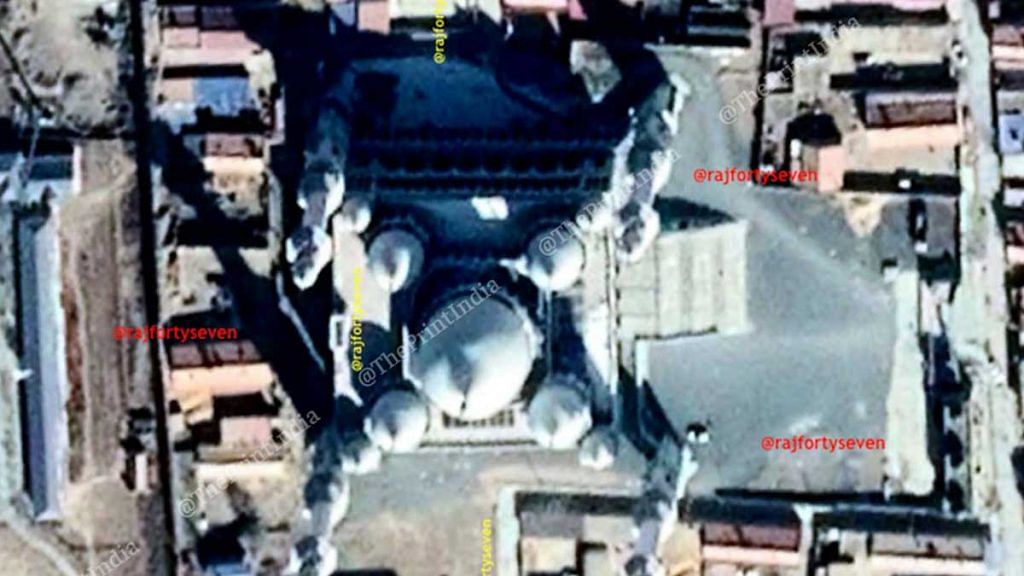China did it with the Tibetans and the Uyghur Muslims. Now, it appears to be in the process of Sinicising the community of Hui, reportedly the largest Muslim minority group in China.
Exclusive satellite images accessed by ThePrint show that mosques in the Hui-dominated areas of Gansu and Ningxia are being remodelled to reflect the aesthetic associated with China’s Han majority.
As can be seen in the images reproduced here, the domes symbolic of Islamic architecture are being replaced with structures that appear to curve outwards — a distinctive feature of traditional architecture in China.
And this remodelling is being pushed through with the public’s forced consent.
Government officials in Gansu and Ningxia have been contacting residents every week. Each of the families contacted, it is learnt, is forced to sign letters asking the government to renovate the religious places since they have become old and require maintenance.
The letters then become the main basis for local governments removing all Islamic literature, stripping the structures of their Islamic architectural influences, and giving them a Han-style makeover, in appearance as well as internal procedures.
Also Read: China separates kids from parents in Xinjiang ‘gulags’ as Uyghur Muslim suppression mounts
Protests punished
The Hui minority traces its roots to Kazakhstan and Kyrgyzstan but lives in central China’s Ningxia, Gansu and Qinghai regions. The Hui people mostly follow Islam (Sunni/Wahabism/Salafism).
The term for Islam in traditional Chinese is “回教” pronounced “Huijiao”, which literally means the religion of Hui people.
Comparison images from as recently as February 2019 throw the makeover of Hui mosques in stark relief, with domes and minarets replaced by Han-style structures.
The small shanty town of Wuzhong in Ningxia seems to have been affected the most — a mosque here has been without a dome for more than three years and is likely to remain thus for good as the roof appears to have been completely flattened.
Protests by the Hui are viewed as a violation of government policy and protesters are sent to jails and detention centres. The protests are termed illegal as the government justifies the renovation through the letters residents were made to sign.
Religious persecution
China, which claims to be atheist by virtue of its traditional affiliation to communism, has been on a drive to ‘homogenise’ religious minorities, like Buddhist Tibetans and the Uyghur Muslims of Xinjiang.
At both places, China is said to run detention centres — colloquially known as ‘gulags’, after the Soviet-era equivalents — where Buddhists and Uyghurs are re-educated in a manner that encourages them to give up their beliefs and pledge their loyalty to the state.
As reported by ThePrint this July, the subjugation of Islam went a step further when the Communist Party of China (CPC) secretary for Xinjiang Uyghur Autonomous Region, Chen Quanguo (popularly known as “Gou”), started exhuming graves to make way for malls, new buildings and infrastructure development.
A number of CPC policies seek to ban certain Islamic names, prevent the proliferation of Islamic culture, and reduce religious adherence among government employees, which will later be implemented for all common citizens.
Also Read: China claims it has no ‘Gulags’, but satellite imagery shows 3 new ones coming up in Tibet
